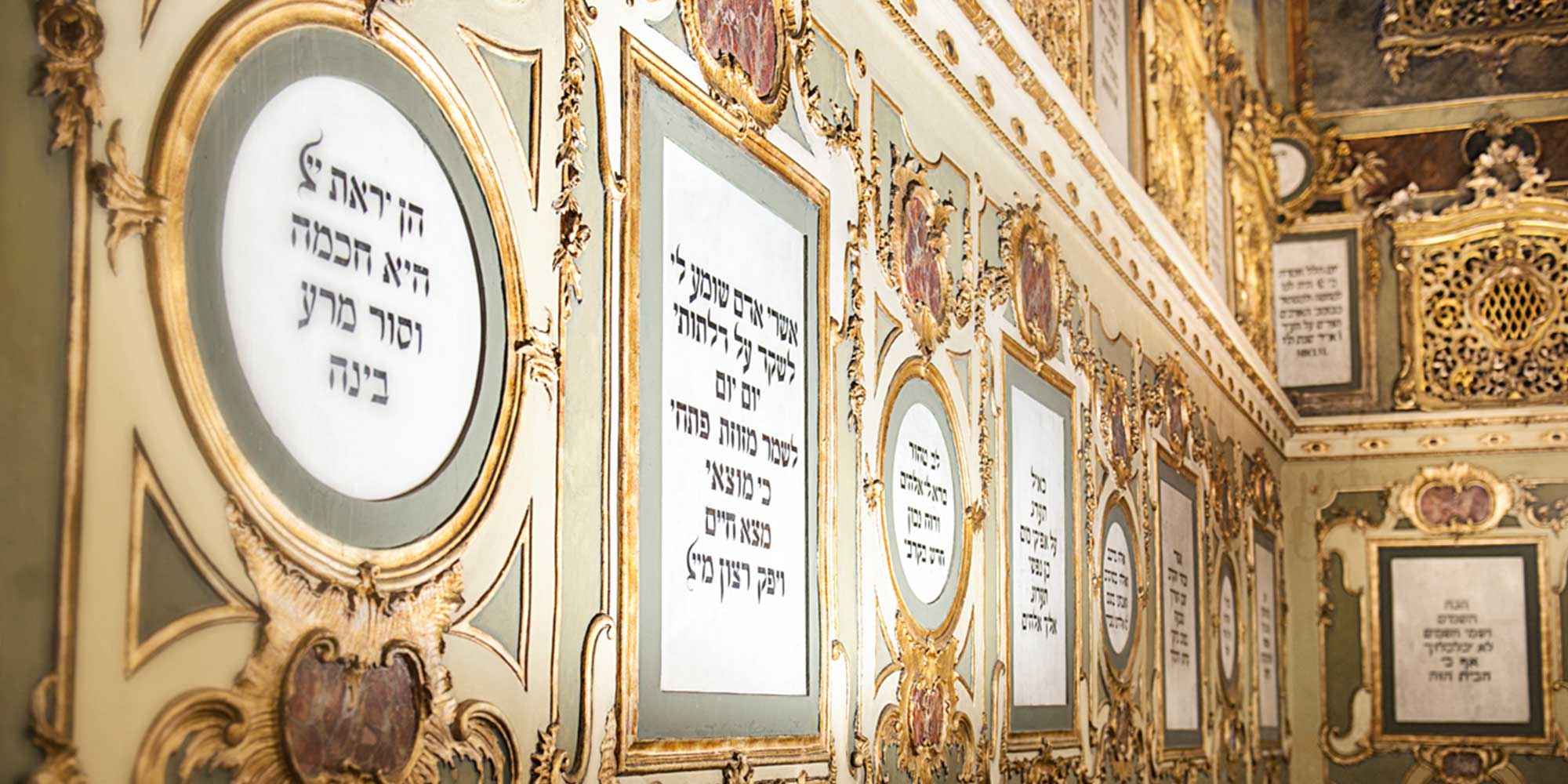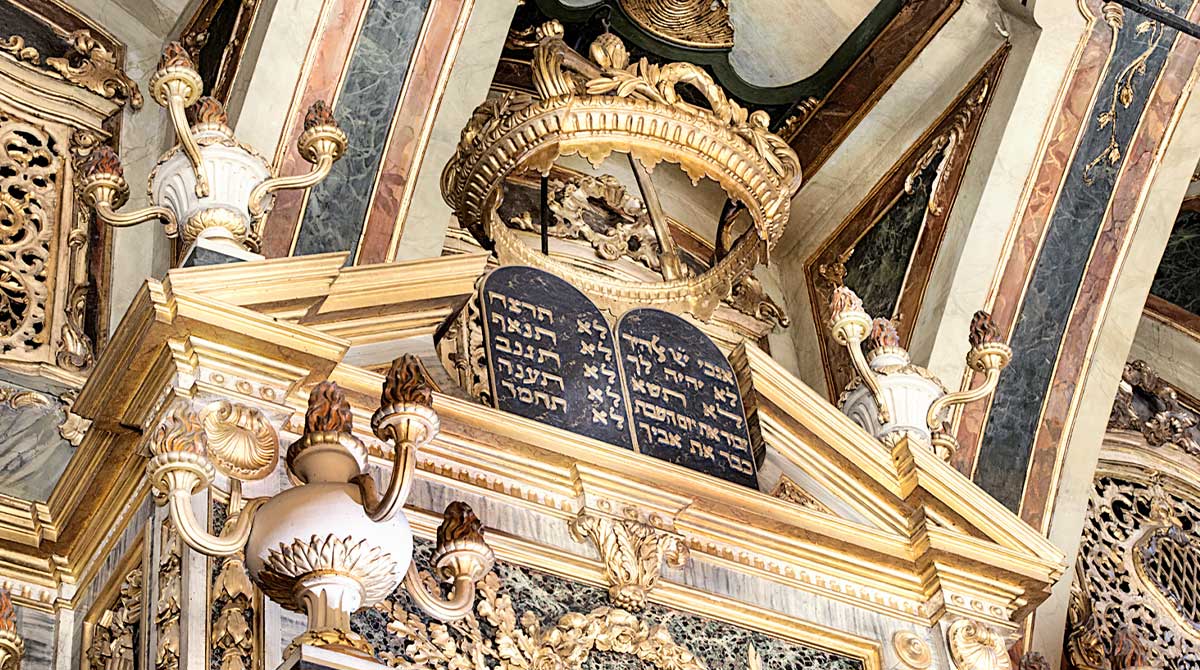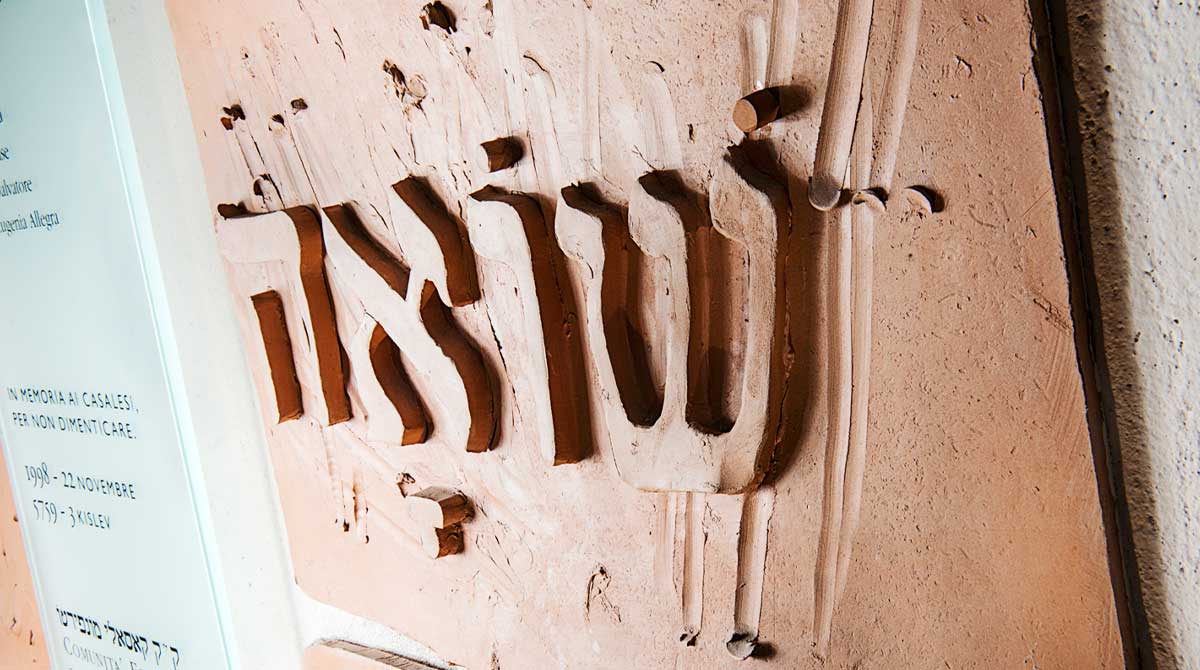The interior of the synagogue and its elements
The ceiling
The hall’s ceiling consists of a lunette barrel vault that rests on the east and west walls, where the large windows and grilles of the women’s gallery are located. Large, gilded chandeliers hang from the ceiling.
The ceiling and windows are decorated with floral motifs and gilded stucco against a blue-green background. The decoration of the vault imitates a blue sky with the Hebrew inscription “ze shaar ha-shamaiym“, in English, “this is the Gate of Heaven” in gold and perforated letters. The commandment that all synagogues must be on the top floor, under the vault of heaven, is thus respected since they must have nothing above them but heaven.
The inscriptions
The walls are covered on all four sides with Hebrew inscriptions on marble tombstones framed by gold ornaments. They are arranged in three rows: the first and third contain quotations from the Psalms; the middle row contains epitaphs commemorating historical events of the Jevish Community of Casale Monferrato and news about the construction and restoration of the synagogue.
Votive tablets
On the back wall, on the sides of the Aron, there are two votive tablets the community wished to commemorate in perpetuity the emancipation obtained in 1848 when King Carlo Alberto granted civil rights to the Jews of Savoy. The community commissioned Rabbi Levi Gattinara to write an inscription in Hebrew and Italian to be walled into the synagogue, a unique case in Italy, in gratitude to the sovereign who had liberated them.
Bas-reliefs
On the two side walls, to the right and left of the Aron haKodesh, there are two rare bas-reliefs of the sixteenth century in scagliola, a fine plaster used in architecture and sculpture, although they look like bronze. The two most important cities of Judaism are represented: on the right, Jerusalem with the Temple of King Solomon, and on the left, the city of Hebron with the Patriarchs’ tombs. Originally, before the synagogue was enlarged, the two bas-reliefs were placed on the walls currently occupied by the Aron and the entrance.





